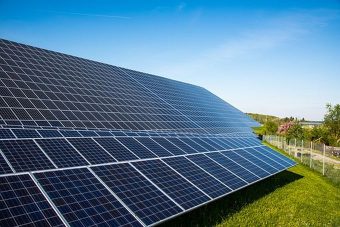
While California has been covering pockets of its deserts in sprawling solar panel farms over the past few years, it turns out the sunny state won’t be home to the world’s largest one.
That will be in China, according to a report from Bloomberg. A clean energy division of China’s largest private investment group, called China Minsheng New Energy Investment, is building a solar panel farm that will stretch across the equivalent of 7,000 city blocks and produce two gigawatts of energy in the northwest of the country.
In comparison, the biggest solar farms in California are a little under 600 megawatts (one gigawatt equals 1,000 megawatts). Large natural gas or coal plants can commonly generate about one gigawatt of energy.
While solar panels on home roof tops are the most emblematic form of solar, the majority of the world’s solar power is coming from these large solar panel farms built in remote regions. The farms sell power to utilities or even big companies like Apple AAPL 0.60% .
Approximately 70% of the solar panels that will be installed in the U.S. this year will be in these “utility-scale” solar farms. Companies like SunPower SPWR 7.02% are turning to the latest computing tech—like drones and robots—to build these big solar farms more quickly, at a lower cost, and with more attention to land concerns.
Making more efficient use of land is an increasing issue for solar companies. The U.S. federal government recently only allocated a small portion of California’s deserts for clean energy projects, while setting aside far more for conservation.
SunPower has started a collaboration with the University of California at Davis to research how to mix agriculture with solar farms. The solar farm in China’s Ningxia region, which is halfway completed, will provide some shade for crops that will be used for feed for animals.
While solar panel farms generate carbon emissions-free energy from an unlimited resource—the sun—the projects have at least two weak spots: the massive land that the sites need, and the variability of the energy (i.e. only works during the day).
It’s unclear whether the Ningxia solar farm will store energy in batteries. But the Bloomberg report says that getting the solar energy that’s already being produced onto the grid has been a bit of a challenge. Approximately 20% of the solar farm’s capacity wasn’t used in the first quarter of this year.
Source: fortune.com



